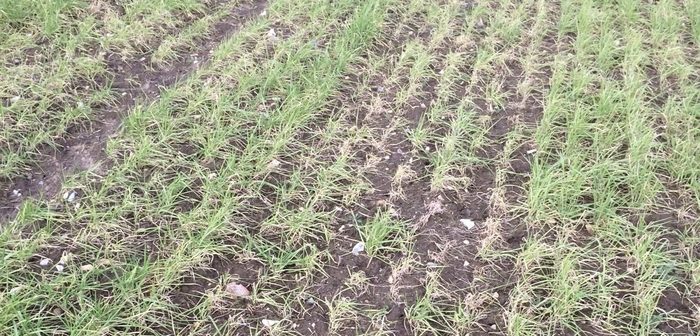Spring-sown cereals that have struggled to establish in the dry conditions through April and May could be given a much-needed boost with targeted foliar nutrition, says leading agronomy firm Hutchinsons.
Poor establishment means poor rooting, which increases the likelihood that crops will struggle to access the required nutrients from the soil, especially where it remains very dry, reducing nutrient availability, fertiliser manager Tim Kerr explains.
Met Office figures illustrate the challenge facing crops struggling to establish in dry soils, as April rainfall was just 40% of the national average, which came after a relatively dry March, especially in eastern counties, followed by further dry weather in May.
Immobile nutrients, such as manganese, copper and zinc, are of particular importance in spring barley and foliar applications may be the only reliable way of preventing deficiencies occurring where root uptake is limited, says Mr Kerr.
A number of foliar nutrient products are available to meet varied nutritional requirements, although he says choice should be tailored to specific crop requirements.
If dry weather persists, nitrogen and magnesium may become the biggest limiting factors to crop development, especially as biomass growth accelerates. Magnesium deficiency is a greater risk on lighter soils and applying a sulphate product would also supply valuable sulphur, he adds.
For nitrogen, Mr Kerr says a foliar nitrogen product, such as N-Durance 28, can be a more reliable way of meeting crop needs in dry conditions than a granular fertiliser application, as it is not reliant on soil moisture for root uptake.
“The assimilation of nitrate in the leaf utilises more of the plant’s energy and carbon resources than any other nitrogen uptake mechanism. Whereas the Amine nitrogen in N-Durance 28 requires just one chemical change to be utilised by the plant, meaning more energy and more carbon are available for photosynthesis and biomass growth.”
Crop recovery of nitrogen applied as fertiliser is typically 50-60%, because nitrogen gets involved in the many soil processes that make up the nitrogen cycle, Mr Kerr continues. Bypassing the soil overcomes both the relative inefficiency and the time-lag between application and availability.
“This is why nitrogen applied as Amine N can be five-times as effective as fertiliser applied to the soil. This is particularly true in drier conditions, as plants rely on soil water for movement of nitrate through the roots. The same applies where root biomass is less than usual.”
Spring barley trials by the manufacturer of N-Durance 28 have shown that 40 kg N/ha of conventional ammonium nitrate granular fertiliser can be replaced with 7 kg/ha of N-Durance 28 when applied at Growth Stage 39, with no reduction in yield (in a programme using 100 kg N/ha AN in total). A yield benefit over the standard 140 kg N/ha AN has also been found when applied at the earlier GS 30 timing.
Biostimulants, such as Advance 66, Bridgeway and Calibra Carbo, have additionally proved very effective at reducing the impact of stress factors on crops and boosting spring barley yields in Hutchinsons trials at Stowbridge in Norfolk.
Mr Kerr acknowledges that growers’ decisions about crop inputs have to reflect the potential of the crop, however the choice to utilise biostimulants should be tailored to the specific crop.
For example, some products work by increasing the enzymes that convert nitrate into protein energy for plant growth, thereby improving overall nitrogen use efficiency. Others directly supply certain amino acids required for building plant protein, supplementing those that are missing due to moisture stress or poor rooting.





